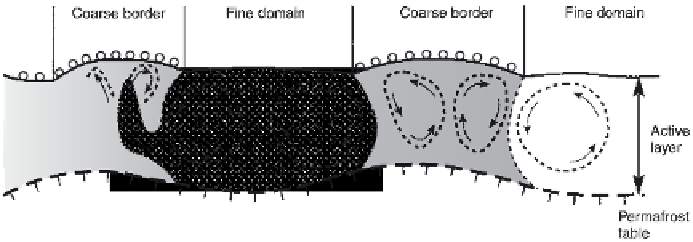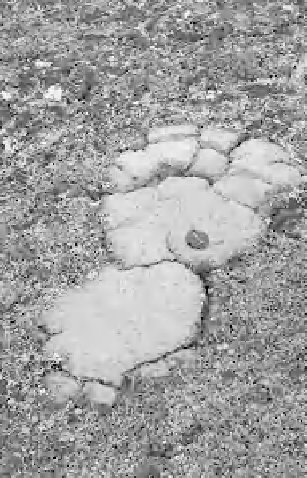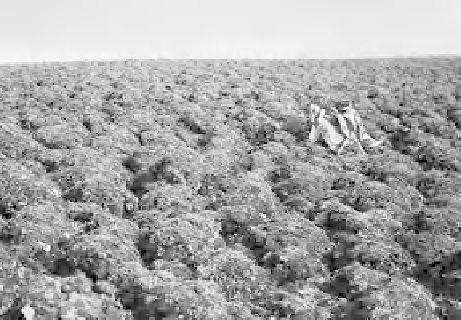Geology Reference
In-Depth Information
Figure 6.21.
Illustration of the surface relief and inferred soil circulation patterns of non-sorted
circles developed in raised beach gravels, western Spitsbergen. From Hallet et al. (1988).
Figure 6.22.
Examples of mudboils and non-sorted circles (hummocks), Arctic Canada. (A)
Mudboil in silty sand, Eastern Melville Island. (B) Slope hummocks at a snow-bank locality, Prince
Patrick Island.
differential heave and ice segregation combine with density instability in thawed soils to
explain cryoturbation structures and, by extension, hummocks (van Vliet-Lanoë, 1988,
1991). Finally, locally-high hydraulic potentials may develop in the active layer from water
confi nement between the underlying permafrost and an overlying semi-rigid carapace.
The latter may be produced by desiccation and hardening of the surface in late summer;
the former may result from hydrostatic- or artesian-induced pressures on slopes, often
generated by summer rain. The result is the formation of mudboils (Figure 6.22A). These
features are ubiquitous over extensive areas of Keewatin and northern Canada and are
typical of poorly-sorted sediments (mud or diamict) with signifi cant silt and/or clay content
(Dyke and Zoltai, 1980; Egginton and Dyke, 1982; Egginton and Shilts, 1978; Shilts,






